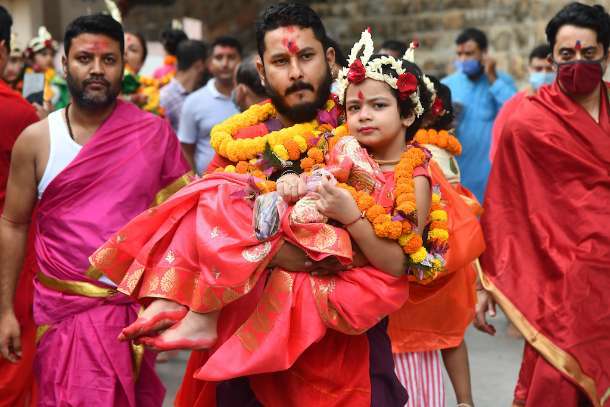Violence scars India’s Christian-dominated tinderbox
The primal fight for dominance over land refuses to die in the restive northeast
 Nirendra Dev, New Delhi
Nirendra Dev, New Delhi
The northeastern part of India, which houses the nation’s four Christian-majority states, often witnesses violent clashes. And religion is not the reason.
The latest violence was when people savagely clashed on the border of Assam and Mizoram states in mid-October. Assam accused Mizoram of encroaching upon its land.
Of the seven states in the region, four of them — Nagaland, Arunachal Pradesh, Meghalaya and Mizoram — continue to clash with Assam on their borders. Christians form 80 percent of the population in three of those states, while they number only 30 percent in Arunachal Pradesh but are the most numerous religious community.
All four were part of the undivided Assam state until the government carved them out as separate states at different points in time, but allegedly without clearly defining the borders.
However, Assam has no dispute with Manipur and Tripura, two princely states that joined the Indian union.
The latest violence was contained and peace was established after police, state officials and the federal government intervened. Officials promised to address all issues in a bid to bring peace.
It is puerile to imagine that this complex issue, which has remained like a live wire for more than five decades, will be solved easily. Emotive tribal-non-tribal ethnic identities and sectarian Christian-non-Christian feelings further complicate the situation.
A former Nagaland minister said that some land remained as no man’s land in thickly forested areas when the new states were carved out. The borders between Assam and other states are mostly imaginary lines. But these change with time as deforestation and human habitation extends, he said.
“Porous borders among different states in India and proximity to development-starved countries like Bangladesh and Nepal have facilitated a large inflow and outflow of people. These have disturbed the demographic pattern in most states, often putting locals in conflict with people from other states,” he explained on the condition of anonymity.
Most serving and even retired government officials avoid going on the record while speaking about these sensitive border issues believing that they may get into trouble with the government or ethnic groups.
The sensitive inter-state boundary disputes in the region are often seen and dealt with using ethnic, tribal, linguistic and religious communal prisms. Thus, each state and respective local police would have different versions of any incident of violence or group clashes.
The absence of development along the boundaries and in far-flung areas also remains a challenge. It is a puzzle to many northeast watchers why such pockets in remote areas along state boundaries, which are susceptible to communal and ethnic clashes, are often left inaccessible.
Mizoram also has issues with Bru tribal people from neighboring Tripura. Officials and even police from both sides blamed each other and claimed that people from the other side violated the status quo norms.
The dispute between Mizoram and Tripura is over Phuldungsai village, which both states claim as part of their territory. Trouble started after the non-Christian Bru tribal group wanted to set up a temple in the area.
Some years back, there were serious clashes along the Assam-Arunachal Pradesh border in the Behali reserve forest, killing at least 10 people and injuring eight.
From time to time, things also have worsened after armed insurgent groups of various tribes in different states have meddled in such conflicts with their guerrilla warfare.
Mizoram, the homeland of Mizo tribesmen and women practicing Christianity, was part of Assam until 1972 when it was separated as a federally ruled territory and later a state.
After the recent clashes between Mizoram and Assam (whose people are Bengali-speaking Hindus and Muslims), the opposition blamed Assam’s ruling party, the pro-Hindu Bharatiya Janata Party (BJP). They also blamed the Mizoram state government, run by the BJP and Mizo National Front (MNF) alliance.
“What kind of an alliance is it where two alliance partners [BJP and MNF] are warring over land at the cost of innocent people?” asks former MP Sushmita Dev, who is also chief of the women’s wing of the Indian National Congress.
Violent clashes along the border areas keep happening at frequent intervals. Still, no serious efforts have been made since the 1960s and 1970s when separate provincial divisions and statehood were granted to them.
In fact, statehood came at different times. For instance, Nagaland became a state in 1963 but Mizoram had to wait until 1987.
Some disputes date back to the British era of 1875 when a notification was issued separating Mizoram, then called Lushai Hills, from Assam. Assam state officials, Mizo people say, have tried to impose a government notification of 1933, which is not acceptable to them.
The primal fight for dominance over land refuses to die. But are these primal emotions kept open, and sometimes wounded, to politically manage and control communities?
History has proved that some disasters were avoidable and some were engineered.



